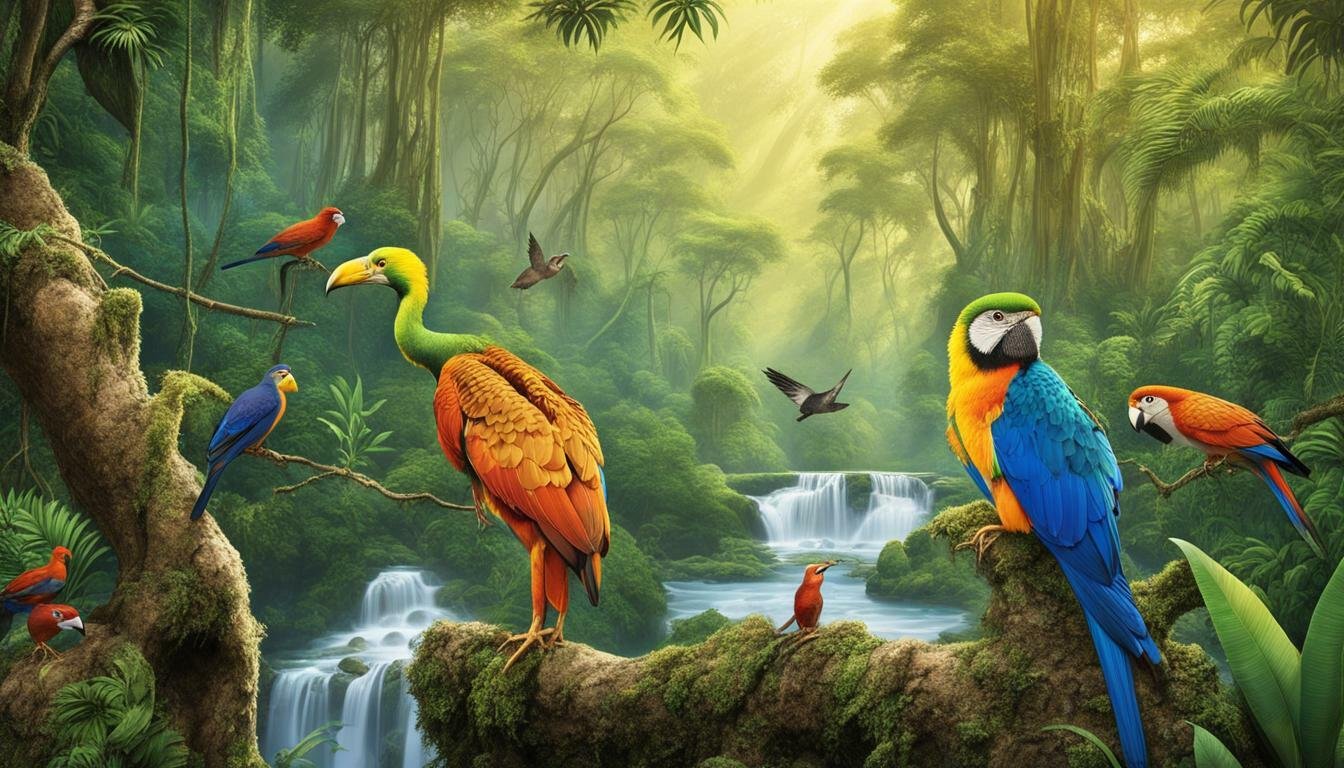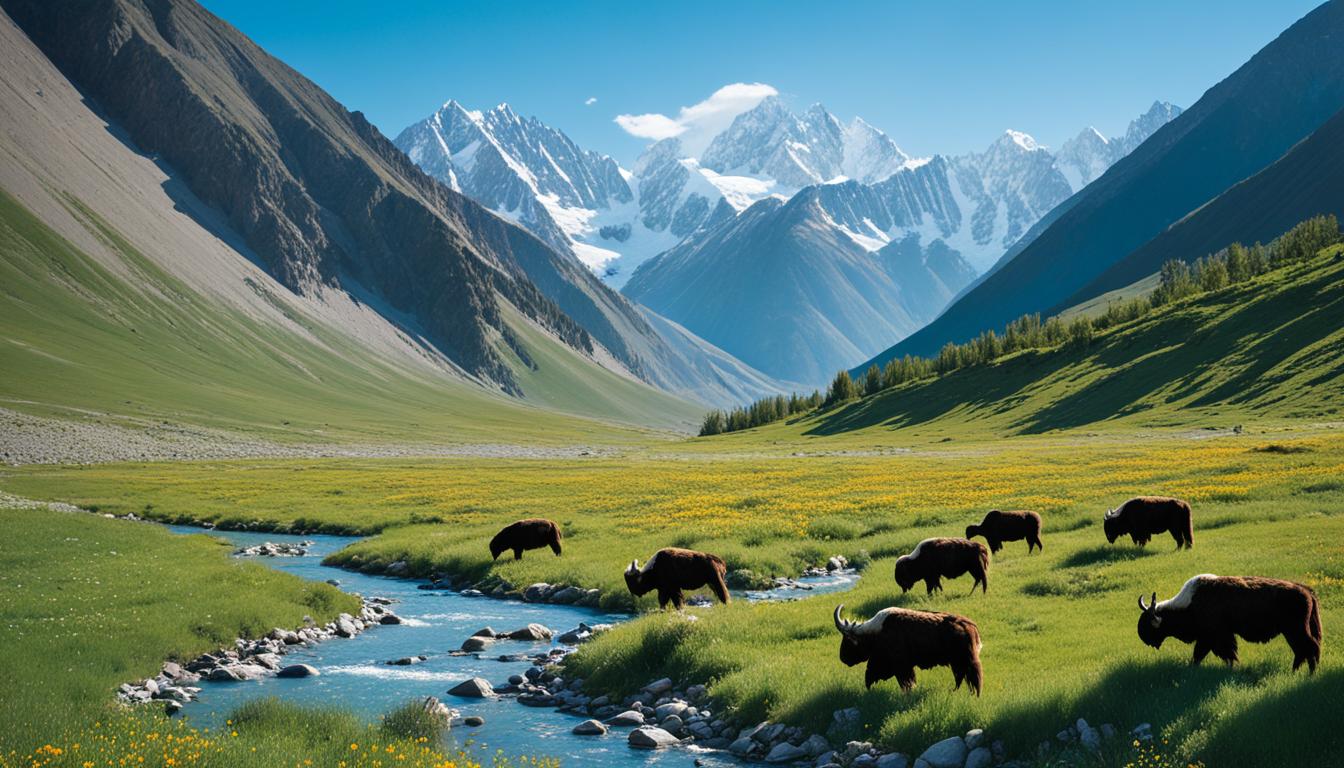Australia Biodiversity: Animal and Plant Species and What is Under Threat
Australia is home to some of the most unique and diverse animal and plant species in the world, making it a biodiversity hotspot. From kangaroos and wallabies to koalas and wombats, the country boasts an array of marsupials, as well as numerous bird species and reptiles. In addition to its rich animal life, Australia also boasts an incredible array of native flora, including eucalyptus trees, wattles, and banksias.
Despite this abundance of biodiversity, many of Australia’s animal and plant species are under threat. Climate change, habitat loss, and invasive species are just some of the challenges facing the country’s wildlife and ecosystems.
Nevertheless, there are significant conservation efforts underway to protect Australia’s native flora and fauna. These efforts are being spearheaded by government agencies, non-profit organizations, and local communities who recognize the importance of preserving Australia’s unique biodiversity.
Key Takeaways:
- Australia is a biodiversity hotspot with unique animal and plant species.
- Climate change, habitat loss, and invasive species are threatening Australia’s biodiversity.
- Conservation efforts are being undertaken to protect Australia’s native flora and fauna.
The Diversity of Australia’s Flora and Fauna
Australia is home to some of the most unique and diverse flora and fauna in the world. The country hosts a remarkable number of endemic species – species that are found only in Australia and nowhere else on Earth. The continent’s isolation from the rest of the world for millions of years allowed the evolution of distinct and fascinating ecosystems that are now under threat.
One of the most diverse areas of Australian flora and fauna is the Great Barrier Reef, which is also the world’s largest coral reef system. This area is home to over 1500 species of fish and over 400 species of coral, as well as sea turtles, sharks, and dolphins. However, environmental changes such as coral bleaching and ocean warming are putting the reef and its inhabitants at great risk.
Another unique feature of Australian fauna is the marsupial family, which includes the famous kangaroo, wallaby, and koala. These animals carry their young in pouches, a unique feature not found in any other mammal family. However, many of these animals are threatened due to habitat loss and fragmentation, as well as the introduction of non-native species.
Australian Biodiversity Conservation
The extraordinary diversity of Australian flora and fauna necessitates the need for biodiversity conservation efforts. Endemic species in Australia are particularly vulnerable due to their restricted range and their high level of specialization. The Australian government and various organizations have implemented policies and programs that aim to protect and manage biodiversity in the country. These include the creation of protected areas, wildlife corridors, and the control of invasive species. Efforts are also being made to conserve threatened species and recover their populations.
The conservation of Australia’s biodiversity is crucial for the maintenance of ecological balance and the continuity of cultural heritage. It also provides economic benefits such as ecotourism and the sustainable use of natural resources.
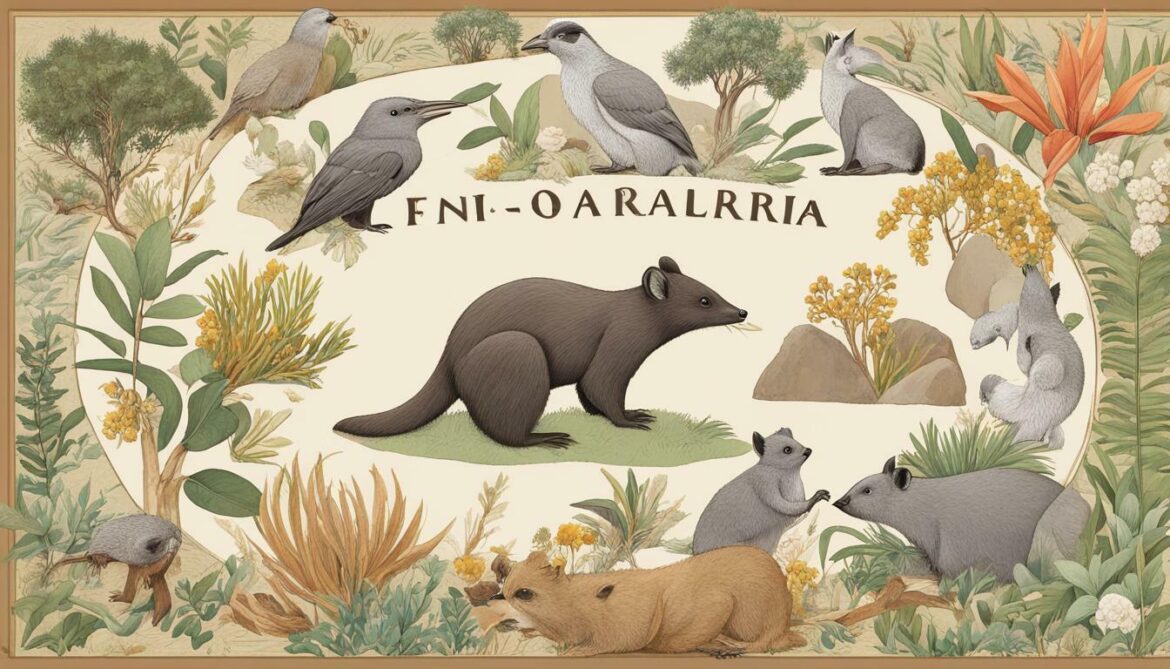
It is important to remember that the survival of Australia’s flora and fauna depends on the actions taken by individuals and communities. By supporting conservation efforts and making lifestyle changes that reduce our impact on the environment, we can ensure that this unique and diverse ecosystem remains for future generations to enjoy.
Australian Biodiversity Hotspots
Australia is home to numerous biodiversity hotspots, areas that are particularly rich in unique and endemic species. These hotspots are crucial for maintaining the health and diversity of Australia’s ecosystems, but they are also under increasing threat from human activities.
One of the most well-known hotspots in Australia is the Great Barrier Reef, the world’s largest coral reef system. The reef is home to an incredible diversity of marine species, including over 1,500 species of fish, six of the world’s seven species of marine turtle, and countless other marine animals and plants.
Another hotspot is the Wet Tropics of Queensland, a region of tropical rainforest that is home to over 3,000 plant species, many of which are found nowhere else in the world. The region is also home to a number of rare and endangered animal species, such as the tree-kangaroo and the cassowary.
The southwest region of Western Australia is another hotspot, boasting over 8,000 species of flowering plants, 75% of which are found nowhere else in the world. The region is also home to a number of endemic animal species, including the numbat, the honey possum, and the western quokka.
| Hotspot | Location | Unique Features |
|---|---|---|
| Great Barrier Reef | Off the coast of Queensland | World’s largest coral reef system, incredible marine diversity |
| Wet Tropics of Queensland | Tropical rainforest region in Queensland | Over 3,000 plant species, rare and endangered animal species |
| Southwest Region of Western Australia | Southwestern corner of Western Australia | Over 8,000 species of flowering plants, endemic animal species |
Conservation efforts are underway to protect these and other biodiversity hotspots in Australia. For example, the Great Barrier Reef Marine Park Authority is responsible for managing and protecting the Great Barrier Reef, implementing measures to reduce the impact of human activities and monitor the health of the reef.
Similarly, the Wet Tropics Management Authority is responsible for managing the Wet Tropics of Queensland, working with local communities and stakeholders to protect the region’s unique biodiversity.
The Australian government has also established a number of protected areas, such as national parks and marine reserves, to safeguard Australia’s biodiversity hotspots. These protected areas are crucial for maintaining the health and diversity of Australia’s ecosystems, but they also face a range of challenges, including climate change, habitat loss, and invasive species.
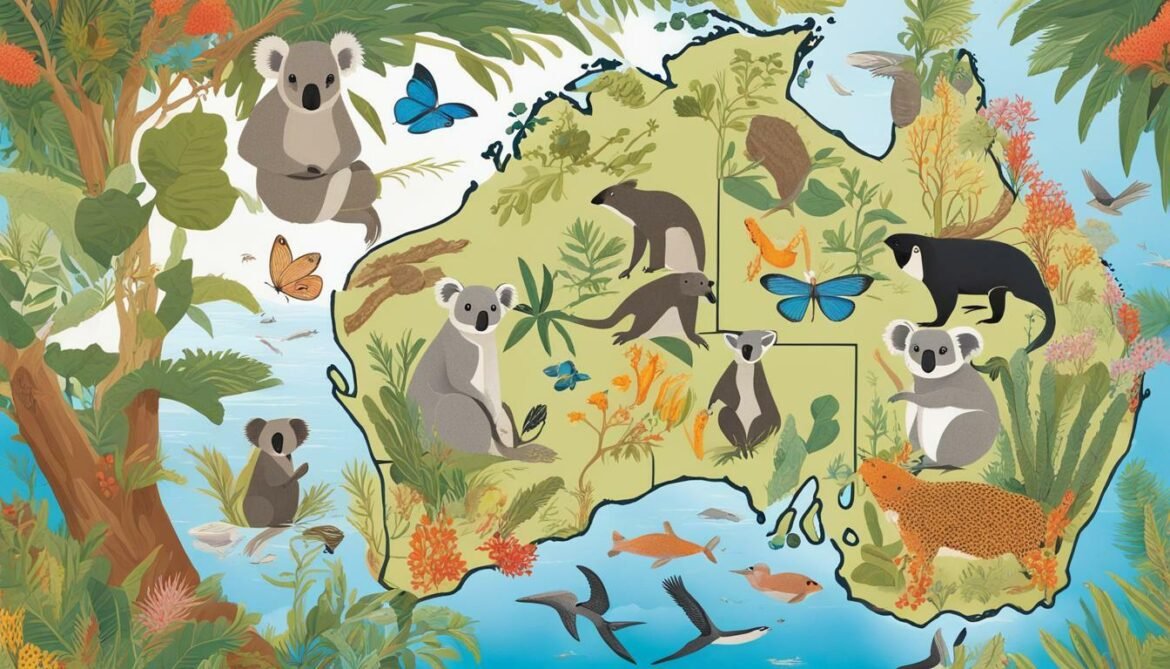
Protecting Australia’s biodiversity hotspots is essential for ensuring the health and resilience of Australia’s ecosystems. By supporting conservation efforts and taking action to reduce our impact on the natural world, we can help to preserve these unique and valuable regions for future generations.
Threatened Species in Australia
Australia is home to an incredible array of unique flora and fauna, but many of these species are currently under threat. Habitat loss, climate change, and invasive species are just a few of the challenges faced by wildlife in Australia.
According to the Australian Department of Agriculture, Water and the Environment, there are currently 511 animal species and 1249 plant species listed as threatened in Australia. This includes iconic species such as the koala, the Tasmanian devil, and the orange-bellied parrot.
Wildlife conservation in Australia is a top priority, with numerous initiatives and programs in place to help protect threatened species. For example, the Australian Wildlife Conservancy manages a vast network of sanctuaries across the country, providing safe havens for endangered animals such as the numbat and the bilby. The Save the Tasmanian Devil Program is another important effort, working to prevent the spread of a deadly facial tumor disease that has devastated the Tasmanian devil population.
The Australian government also plays a crucial role in wildlife conservation, working to protect and manage threatened species and their habitats. The Environment Protection and Biodiversity Conservation Act is a key piece of legislation that helps to ensure the conservation of Australia’s biodiversity.
| Threat: | Impact on Species: |
|---|---|
| Habitat loss | Loss of food and shelter, fragmentation of populations, increased risk of predation |
| Invasive species | Competition for resources, predation, spread of disease, habitat modification |
| Climate change | Altered temperature and rainfall patterns, sea level rise, ocean acidification, increased frequency and intensity of natural disasters |
It is crucial that we continue to prioritize wildlife conservation in Australia and take action to protect threatened species. By supporting conservation efforts and making environmentally conscious choices in our daily lives, we can help ensure that future generations are able to enjoy the rich biodiversity that makes Australia so unique.
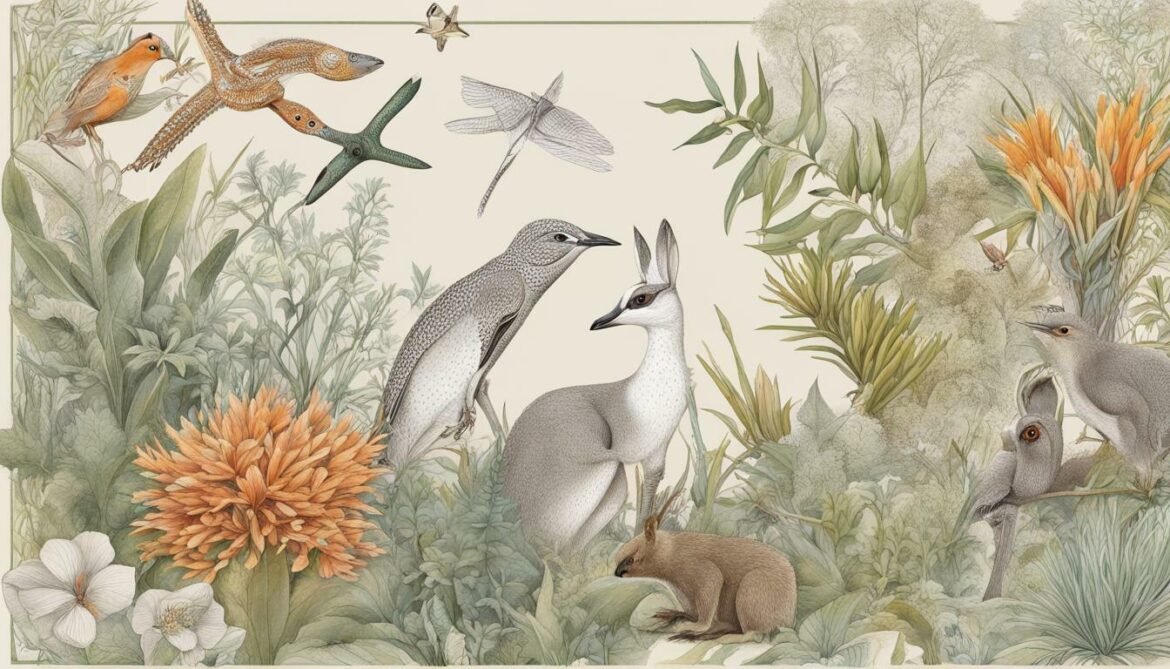
Biodiversity Management in Australia
Australia is home to an incredible diversity of flora and fauna, much of which is endemic and found nowhere else in the world. With the increasing threats to biodiversity, the Australian government and organizations have implemented various strategies and initiatives to manage and protect the country’s unique ecosystems.
The cornerstone of biodiversity management in Australia is the establishment of protected areas, which cover over 14% of the country’s landmass. These areas include national parks, marine parks, and wildlife reserves, among others. Protected areas are essential for preserving biodiversity, as they provide a safe haven for many threatened species.
In addition to protected areas, legislation plays a vital role in biodiversity management in Australia. The government has passed numerous environmental laws to protect threatened species and ecosystems. For example, the Environment Protection and Biodiversity Conservation Act (EPBC Act) is a key piece of legislation that aims to protect and conserve biodiversity and ecological processes.
Biodiversity management in Australia also involves community involvement. Many organizations work alongside local communities to develop conservation initiatives, promote sustainable practices, and raise awareness of the importance of biodiversity conservation. For instance, Landcare is a community-based program that brings together farmers, landowners, and volunteers to work towards sustainable land management practices and promote biodiversity conservation.
Despite the efforts taken, biodiversity management in Australia faces numerous challenges. Habitat loss, invasive species, and climate change continue to threaten many species and ecosystems. However, with continued conservation efforts and public support, it is possible to mitigate these threats and protect the unique biodiversity of Australia for future generations.

The Significance of Australia’s Native Flora
Australia’s unique native flora is a vital component of the country’s rich biodiversity. With more than 24,000 plant species, of which around 85% are endemic, Australia has one of the most diverse and distinctive flora in the world. The native flora plays a crucial role in maintaining ecological balance, serving as the foundation of complex food webs and contributing to numerous ecosystem services.
However, Australia’s native flora faces numerous threats, including habitat loss, invasive species, and climate change. To protect and preserve this vital resource, various conservation efforts have been implemented across the country.
The Australian government, for instance, has established a network of protected areas, including national parks, nature reserves, and other conservation reserves, which cover over 11% of the country’s land area. These protected areas provide a safe haven for many native plant species, allowing them to thrive in their natural habitats.

In addition, numerous conservation organizations, such as the Australian Network for Plant Conservation, are working to conserve and restore threatened and endangered plant species. These organizations conduct research, develop conservation plans, and engage in community education and outreach to raise awareness about the importance of native flora conservation.
The significance of Australia’s native flora extends beyond ecological and scientific value. It also has cultural and economic importance. Many native plants have been used by Indigenous Australians for food, medicine, and cultural ceremonies for thousands of years. The cultivation and export of native plants also provide significant economic benefits to the country.
In conclusion, conserving Australia’s unique native flora is essential for the country’s ecological, cultural, and economic future. The preservation of these plants requires ongoing efforts, including the protection of natural habitats, restoration of degraded areas, and public education and awareness. By working together, we can ensure that Australia’s rich biodiversity and unique native flora continue to thrive for generations to come.
The Significance of Australia’s Native Flora
In Australia, the native flora is not only beautiful and unique, but it also plays a crucial role in maintaining ecological balance and cultural heritage. From the iconic eucalyptus trees to the vibrant native wildflowers, these plants provide vital ecosystem services such as oxygen production, soil health maintenance, and support for native wildlife.
Furthermore, Australia’s native flora has significant cultural importance to Indigenous Australians, who have used these plants for medicinal, spiritual, and practical purposes for thousands of years. Preserving this heritage is crucial for not only ecological reasons but also for maintaining cultural diversity and respect.
Unfortunately, many native plant species are under threat from factors such as habitat loss, climate change, and invasive species. However, there are ongoing conservation efforts in Australia to protect and restore native flora. This includes initiatives such as habitat restoration, seed banks, and community education and involvement.
Biodiversity Conservation Australia
Overall, the preservation of Australia’s native flora is a crucial aspect of biodiversity conservation in the country. By protecting and restoring these plants and their habitats, we can ensure a sustainable future for Australia’s unique flora and fauna. It is up to all of us to support ongoing conservation efforts and take action to protect this precious biodiversity for future generations.
FAQ
Q: What is biodiversity?
A: Biodiversity refers to the variety of living organisms found in a particular ecosystem or on Earth as a whole. It encompasses all the different species of plants, animals, and microorganisms, their genetic diversity, and the complex interactions between them and their environment.
Q: Why is Australia’s biodiversity unique?
A: Australia is home to a remarkable array of unique animal and plant species that are found nowhere else in the world. This is due to its long isolation from other land masses, which allowed for the evolution of distinct and diverse flora and fauna.
Q: What are conservation efforts in Australia?
A: Australia has implemented various conservation efforts to protect its native flora and fauna. These include the establishment of national parks and protected areas, the implementation of legislation to regulate wildlife trade and habitat destruction, and the promotion of community involvement in conservation initiatives.
Q: What are biodiversity hotspots in Australia?
A: Biodiversity hotspots in Australia are specific regions that are exceptionally rich in unique species. These areas often have a high level of endemism, meaning they are home to species that are found nowhere else in the world. Some examples of Australian biodiversity hotspots include the Great Barrier Reef, the Wet Tropics of Queensland, and the Southwest Australia region.
Q: What are the threats to Australian species?
A: Australian species face a range of threats, including habitat loss due to urbanization and agriculture, climate change, invasive species, pollution, and overexploitation. These threats can have devastating consequences for the survival of various plant and animal species.
Q: How is biodiversity managed in Australia?
A: Biodiversity management in Australia involves a combination of strategies. This includes the establishment of protected areas and reserves, the development of legislation to regulate activities that may harm biodiversity, and the implementation of conservation programs and initiatives by government agencies and non-governmental organizations.
Q: Why is native flora important?
A: Native flora in Australia plays a crucial role in maintaining ecological balance and providing habitat and food for native fauna. It also holds significant cultural and economic value, with many plants having been used by Indigenous communities for traditional purposes and providing potential benefits for industries such as tourism and medicine.



